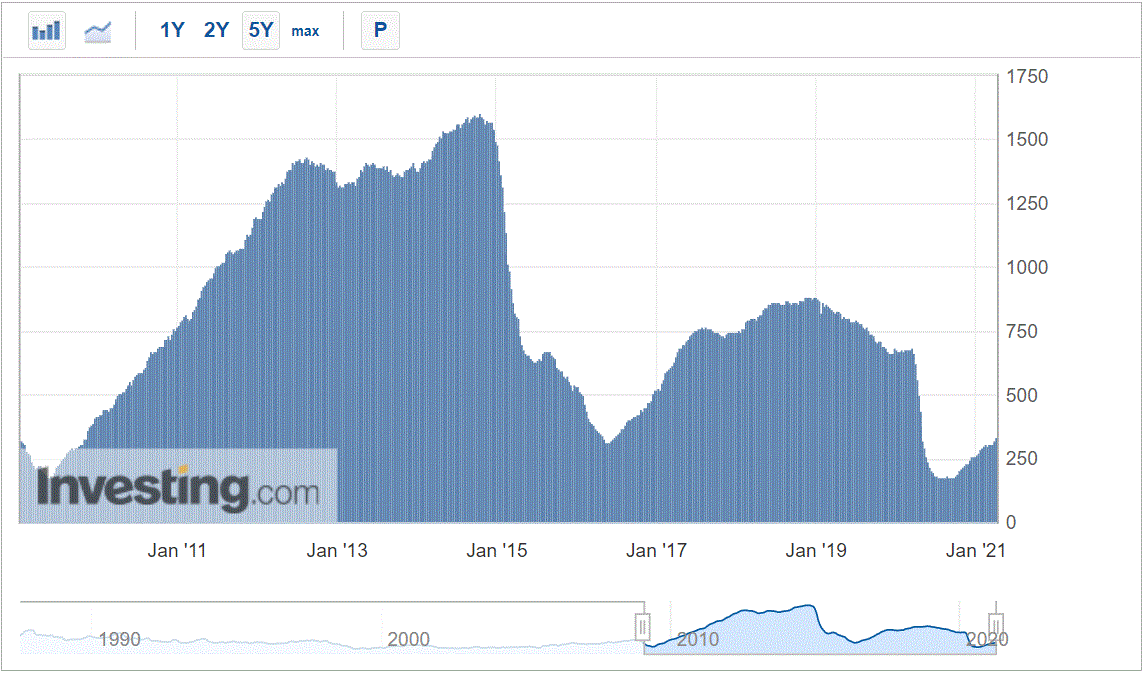It is the favourite trick of investment banks to set their own forecast so that they can be “surprised” when data misses come about. They all use it to manipulate price action to benefit their trades. A nice example is Goldman in the oil market today.
The pre-Easter OPEC was bearish for prices as OPEC drips back 1.1mb/d and Saudi Arabia relaxes its 1m/bd unilateral oil cut over the next three months as well. Moreover, US oil rigs are now clearly responding to price stimuli:

Remember that huge productivity gains in shale oil mean fewer rigs are needed for the same volume of output each cycle. More to the point, despite Goldman selling the line for months that US shalers would be slower to respond to higher prices this time around, they are coming back online at precisely the same speed, meeting my expectations.

